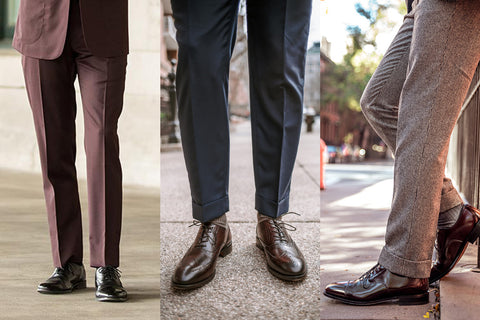
The Art Of Formal Dressing For Men | Men's Style Guide By HolloMen
Share
Formal attire for men or being on a formal dress code does not mean just putting on suits and ties; it is way more than that. Formal dressing is clearly distinguishable from casual/ informal wear. It is mostly associated with certain events and settings. Although formal, different types of outfit sets are worn at different times of the day and distinct seasons of the year. For instance, the formal attire for noontime differs from the one for a night event.

What Does Formal Attire For Men Mean?
In an era saturated with misinformation on fashion, formal dressing can highly be misunderstood. One thing that you should never overlook when you think of formal wear is that it is extremely strict. In regard to the event’s specifications, certain outfits ought to be worn. Semi-formal dressing, which is also accepted in most office settings and formal events, has the rules loosened a little bit.
Formal Wear For Men At Work
With respect to the type of industry and level of dressing professionalism required, dressing at work is perceived differently. Office wear might or might not be as strict, mostly dependent on the expected impression. The standard formal dressing in any workplace is a full matching suit. This includes a jacket, dress shirt, pants, and corresponding pair of shoes. It is imperial to note that your formal shirt should be properly collared with a button-up. A tie matching the jacket and pants(although not a necessity) is also key to a satisfactory formal dress code.

In a business environment, the darker the suit the more formal it is. Very bright and immensely noticeable colors are a no-go zone. Light blue, white, and beige are good color choices for your dress shirt.
Accessories For Formal Attire At Work
The essence of formal attire at work is uniformity and inconspicuousness. This calls for the accessories you opt to wear not to be extremely colorful. Depending on the color of your attire, mostly a black or brown belt would do. Dress socks should always match the pants. Optional accessories such as pocket squares and cufflinks should match the tie.

Just like for events, the formal office dress code is affected by season. However, this does not give a leeway to break the rules. Instead, it is the material and fabric that should be looked into. During the summer, go for suits made of lightweight and breathable fabrics such as linen. Wool suits are the best option when it gets cooler. Over the winter season ensure that your closet is packed up with suits made from the “nature’s insulator”- wool.
Formal Dressing For Events
Most invitations for events clearly state the anticipated form of dressing. If not stated things like the season, time, type of event, and the kind of attendees can go a long way in telling you the expected kind of dressing. Here are some of the most common formal dress codes expected at different events;
- White Tie
This is the rarest formal dressing code. White-tie dress code events are mostly associated with people of the noble class in the society. Here you should don on a tailcoat, white vest and a white bowtie.
2. Black Tie
Most formal events lie under this category. As a man, you’re expected to be in your tuxedo:
- Black evening jacket
- Black trousers
- Black cummerbund or Low waistcoat
- White dress shirt
- Black bow tie
- Black oxford shoes
3. Black Tie Optional
The “optional” part of this code is not entirely optional. To some extent, you’re expected to be in your black tie. The main difference here is that you have the option between a tuxedo or any other dark suit. You are not entitled to wear the traditional evening jacket, other types of jackets are allowed in such an event.
4. Creative Black Tie
In this kind of event, you are allowed to add some pop to your formal dressing. You do not have to adhere to the traditional black-tie principles. Here different prints, patterns, colors, textures, and accessories are accepted. As the name suggests, you can get creative with your outfit as much as you can; it is a twist of the black-tie dress code. A sample ensemble of creative black tie would include:
- Midnight blue jacket
- Matching pants
- White dress shirt
- Cummerbund
- Silk hosiery
- Black tuxedo shoes

In conclusion, to understand the art of formal dressing, you must be fully aware of the occasion. When the expected dress code for an event is stated, the rules should be followed utterly. The guide on dressing at work can also be used for specific occasions such as an interview or graduation. Get the foundation on formal attire right so as to maintain a great style and elegance wherever you are!
2 comments
H8 8 really l8nked your article on The Art of Men’s Formal Suits I enjoyed reading your post hope to read more.
https://dress-toshine.blogspot.com/2023/09/the-art-of-mens-formal-suits.html
My brother is going to an important work interview next month, so I’m helping him find the perfect formal wear to impress the HR staff who will be speaking with him. I appreciate you letting us know that the standard formal dressing in any workplace is a full matching dark suit that includes a jacket, dress shirt, pants, and corresponding pair of shoes. I’ll tell my brother about this while I help him shop for formal wear this weekend. https://gentlemensoutfitterscharlestown.com.au/products/